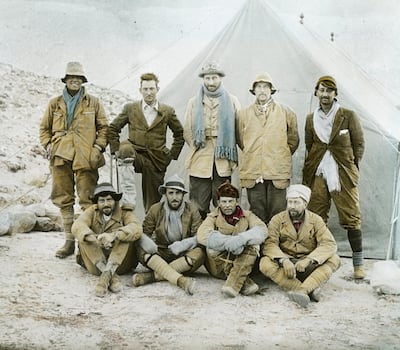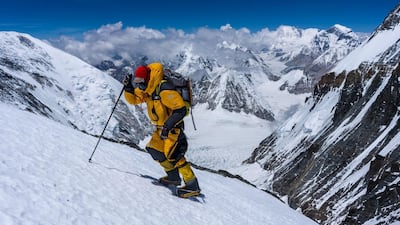On June 8, 1924, two British men set out for the summit of Mount Everest, but never came back.
Lost on Everest, a documentary from National Geographic, retraces the journey of mountaineer George Leigh Mallory and engineering student Andrew "Sandy" Irvine, in an attempt to answer the question of whether or not the two men made it to the top of the mountain.
It's a piece of information that, if confirmed, could rewrite history by making them the first two men on record to climb the summit (before Edmund Hillary of New Zealand and Tenzing Norgay of Nepal in 1953).

Mallory pioneered the first expedition to Everest, and the 1924 expedition was his third attempt at climbing the world's highest mountain. It's a journey that, in the 1920s, is compared in the documentary, achievement-wise, to going to the Moon.
When asked by the New York Times in 1923 why he wanted to climb Everest, Mallory famously replied: "Because it is there."
The gripping 60-minute documentary follows a team of climbers, including professional rock climber Mark Synnott and mountain climber Thom Pollard, as they attempt to locate and find Irvine's body, with the hope of retrieving his camera, which they believe could have photographic proof that the two men reached the summit and died on their descent.
In 1999 an expedition found the mummified body of Mallory, but not the camera, which is why the climbers sought out Irvine's body.
Renan Ozturk, a rock climber and filmmaker who filmed and co-directed the documentary, tells us that the main challenge in any expedition of this kind is altitude.
"It's something that is really hard to explain to anyone in an article or even in a film. The way I've described it is that as soon as you arrive at Base Camp at 8,000 feet, your body just starts to die slowly and you have a limited amount of time up there," he says.
Which makes you wonder how, almost 100 years ago, Irvine and Mallory were able to make the trip with the modest clothing and limited tools they had at hand.
"I just couldn't really figure out how they even made it with the equipment that they had. It's really incredible," says Ozturk. "We had electronic battery-powered heaters in our boots and in our gloves, and just all that technology packed into all those things," and yet it was still an excruciating experience, he says.
Ozturk and the team reach the summit of Everest, capturing some never-before-seen footage on the way. He says the view from the mountain is like "looking at a museum exhibit frozen in time".
But is it worth risking your life for? Ozturk says that's the hardest question that people ask him.
"'Why would you drive yourself to that point? Why suffer?' I think initially for me when I was younger it was that pure exploration type of drive. I just really wanted to experience it for myself and stand on some of these summits and see how far I could push myself.
"As I get older, the drive for me is about the things you bring back – the images you bring back that answer that question in images and not words," he says.
For Ozturk, capturing sunrise on the summit of Everest as it had never been seen before, or a scene of the rubbish dumped by people on the mountain, to raise awareness of the issue, is worth the risk.
Their preparation of going to Everest is also told in a five-part behind-the-scenes series called Shooting for Everest.
"It lives beyond you and speaks truths you can never say in words and it pushes the narrative of what is really happening up there and what the industry is like."
Lost on Everest captures the spirit of Mallory and Irvine, and the drive of every mountaineer who keeps pushing to get to the top, despite all the risks.
Did they find the camera? Or the body? You'll have to watch to find out ...
Lost on Everest is on National Geographic Abu Dhabi on Sunday, July 19, at 6pm; and on National Geographic on Wednesday, July 22, at 10pm


